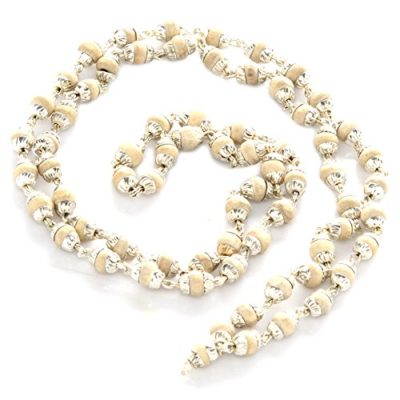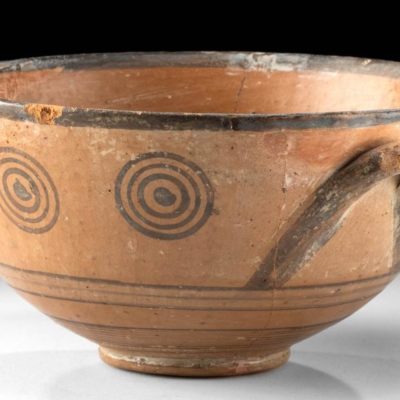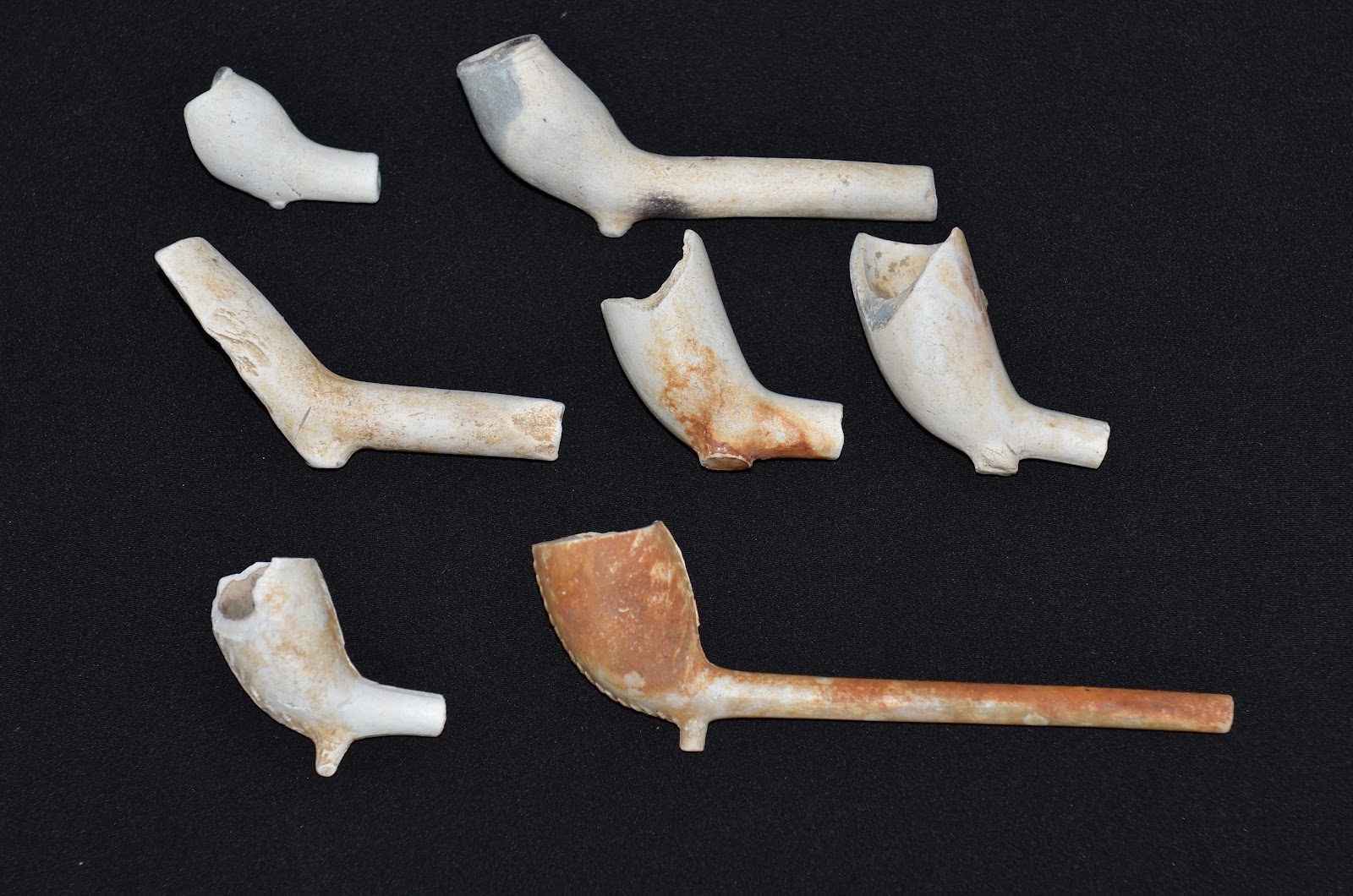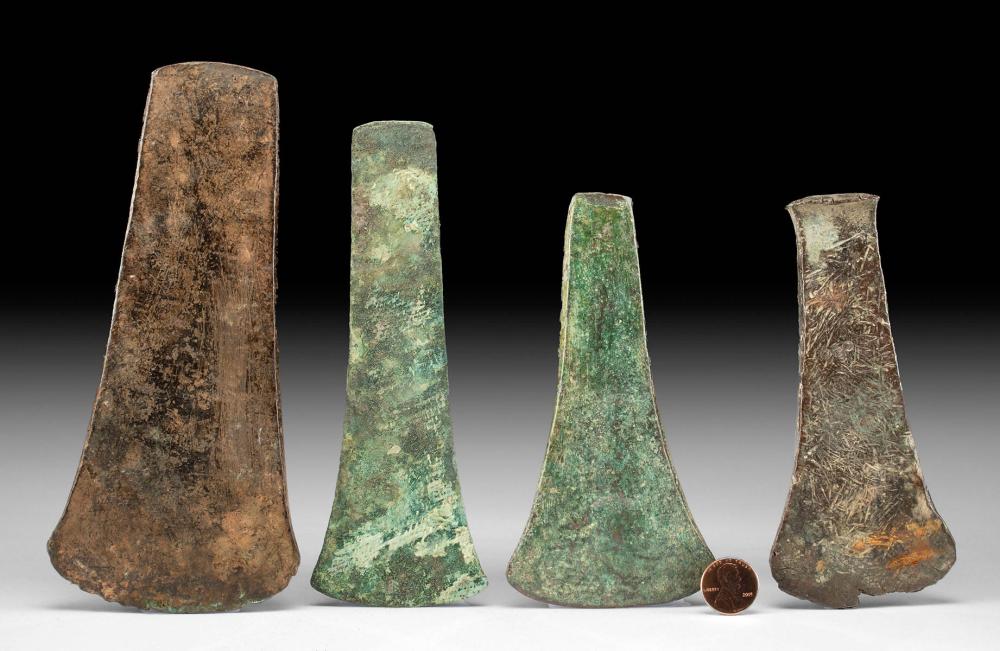The West Mexican states of Colima, Nayarit and Jalisco are famous for the hollow ceramic human effigy figurines, plant and animal effigies and painted bowls and jars that were made during the Late Formative Period, circa 200 B.C. to A.D. 300. During this time the native cultures, for whom we have no actual names, made these amazing vessels and interred many of them in the shaft tombs in this somewhat remote region of Mexico. These pottery artisans were among the best in the history of the world with their realistic and stylistic painted ceramic creations that were probably as admired by the natives two millennia ago as by we contemporary people today. As the Late Formative Period morphed into the Classic Period, the pottery made by these Amerindians began to change with fewer of the wildly conventionalized motifs being produced in favor of more simple and practical wares. This was possibly because the people ceased their shaft tomb burial practices during this period. It is theorized that the human stylized vessels were effigies of ancestors and/or guardians of the deceased and the animal and plant effigies were afterlife food sources – so with less ancestor burial worship, fewer of these vessels were needed. As the Classic Period shifted into the Post-Classic Period, circa A.D. 900 to A.D. 1528, these natives continued to make pottery for utilitarian uses but even less for religious/ceremonial purposes.
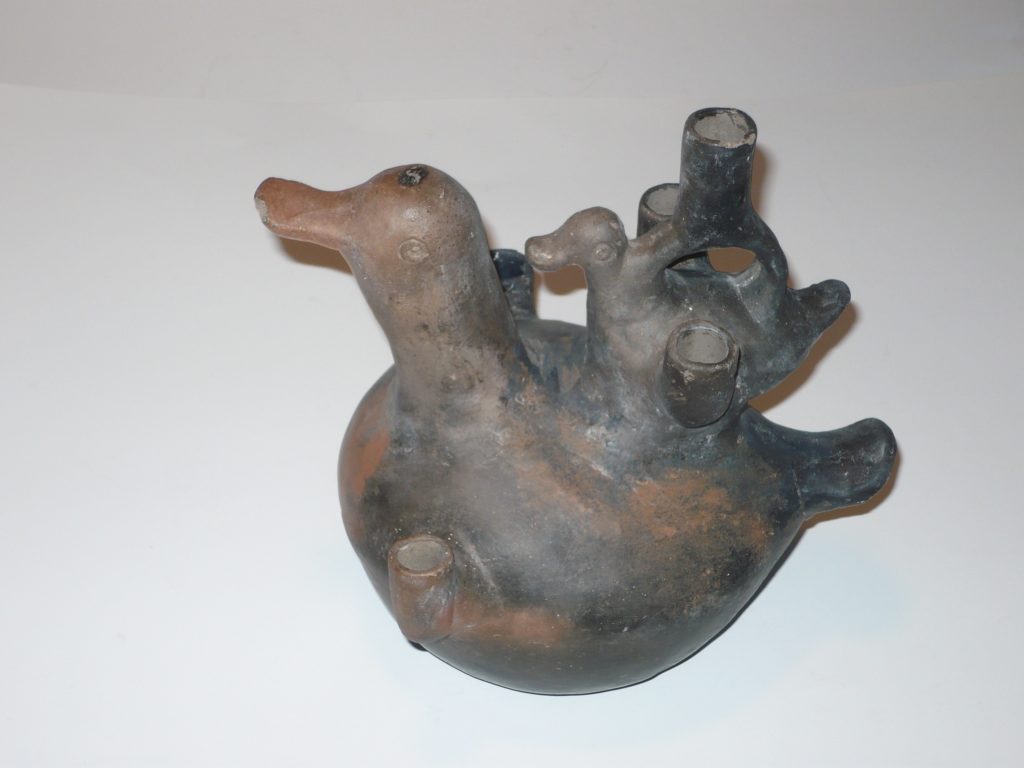
Then their entire world was thrown topsy-turvy with the invasion by the Spanish in A.D. 1528. Within a few years, the soldiers of Hernan Cortez, and the other Spaniards who followed him, totally devastated the country from East to West and everything familiar to the aboriginals was changed. These Europeans brought devastating diseases, enslaved the Amerinds and totally ravaged the land in their search for gold and silver. And they brought their religion, Catholicism, which they forced the natives to adopt. Pottery continued to be made but mainly simple vessels since the Catholic religion forbade any form of idolatry. But as with many conquered peoples throughout the world and throughout time, these West Mexicans probably secretly defied their new masters and continued to worship their gods and make their pottery effigies.
Sometime during the Post-Contact Period of A.D. 1528 to A.D. 1800, an unknown Colima pottery maker fashioned this odd duck effigy stirrup vessel. It is a large duck with a smaller duckling riding on it’s back. But just how do we know it was made during this stated period of time? Simple – there are four candle holders incorporated into the large and small duck bodies and the natives of the region would have had no knowledge of candles before the European invasion forced the new candle lighting religion upon them. This extremely well made and realistic vessel is probably an effigy of a Muscovy duck and duckling which were indigenous to the region before the arrival of the Spanish. The vessel would have allowed the maker to continue to practice his or her ancient religion while also acknowledging the new religion with the usage of candles. It is eight and three-quarters inches long head to tail and nine and one-half inches tall to the top of the duckling. It is grey ceramics with probable grog tempering agent and well burnished overall and there are remains of some of the red/brown paint slip that was so extensively used prehistorically in the region. But why was this unique vessel made? Were the native people still practicing adoration of buried ancestors during this late period of time? Was it meant to be symbolic food in the afterlife of some revered family member? Or did the originator simply want to show off pottery making skills to the community? We will never answer these questions but I am happy that it was made and can now enjoy the rarity and beauty of this Colima Duck Effigy Vessel.
REFERENCES:
Bell, Betty, Editor
THE ARCHAEOLOGY OF WEST MEXICO
1974
Kelly, Isabel
STUDIES IN ANCIENT MESOAMERICA
1978
Townsend, Richard F., Editor
ANCIENT WEST MEXICO – ART & ARCHAEOLOGY OF THE UNKNOWN PAST
1998
Von Winning, Hasso
THE SHAFT TOMB FIGURINES OF WEST MEXICO
1974
Weigand, Phil C.
ANCIENT MESOAMERICA
1996


